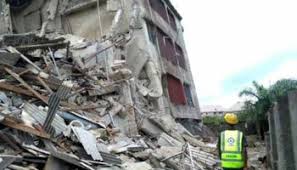How to recognise early signs of a distressed building

Incidents of building collapses in Nigeria have become a serious cause for concern; and when they occur, they caused sorrow, tears, and blood.
In more grievous cases, entire families and their properties are lost to the incidence.
However, the fatalities that accompany each building collapse can be eliminated or minimized if early warning signs of a distressed building are heeded.
Here are some warning signs to take seriously;
Major cracks in the wall
A crack in the wall of a building is a natural sign that the structure is unable to accommodate the movement or load to which it is subjected. When acrack appear in the walls of a building, it is either a structural crack or a non-structural crack.
While structural cracks appear as a result of incorrect design, faulty construction or overloading, non-structural cracks appear due to internally induced stress on the materials used in constructing a building.
Thermal movement remains one of the most potent causes of cracks to appear in the walls of buildings. If overlooked, this could eventually lead to the collapse of the building.
Mould, water stains on walls and collapsing ceilings
There is usually one way mould and rot are caused – Water got to a part of the house that should not be wet. Professionals prefer to call this ‘moisture penetration.’
When there is an excess of moisture that can’t escape within the structure of a house, it is called a damp.
The natural tendency of moisture is to spread out from wet parts of a house to the dry areas. The moisture would also move downwards with the under the influence of gravity. Your house construction should allow for this.
Gaps between floors
When there are gaps between the walls and floors of a building, you must understand that this is a structural defect that could end very badly. Uneven spaces and sloping floors are not to be taken lightly. For instance, take a look at the house from the street. Is the front entrance straight? For contemporary homes, sloping floors are a really bad sign.
Deteriorating support structure
Deterioration can result due to different reasons including;
Substandard materials used: As building components fail, they can directly impact on the exterior walls. The collapse of interior floors can push against masonry exterior walls; and this eventually paves the way for the collapse of buildings.
Tears and fissures in foundation structures: This can also happen when fissures appear in welds of steel during construction or over time. A building is likely to undergo progressive collapse when a primary structural element fails, resulting in the failure of adjoining structural elements, which in turn, causes further structural failure culminating in a building collapse.
Deformed siding: Siding is what protects your building from the moisture and the elements. It can be found on the inside and outside the walls of the buildings that are well constructed. When not kept in good condition, it can deteriorate and result in weakening of foundational structures; something that often leads to building collapse.
Creaking and popping sounds
When the house you live in begins to make creaking and popping sounds, you should be very worried. When a house creaks, what is happening is that the metal parts contract much more than the wood does. As a result, the nails, pipes and air ducts rub against the wood.
Also, the wood rubs and grinds against other wooden parts of the structure, which creates the creaking sounds.
If you ever find yourself hearing weird sounds and cracks, especially during strong winds, it’s a sign you should pay attention to
Babajide Okeowo








